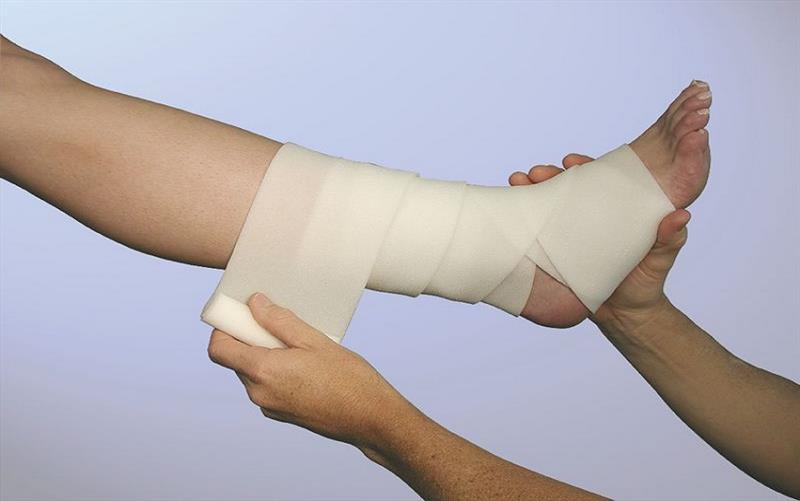
For a number of ailments, Jobst bandages provide a non-invasive, efficient way to increase circulation and hasten healing. These bandages can offer the support and relief required for a quicker and more comfortable healing process, whether you're recuperating from an injury or surgery, or you're coping with a persistent health condition like lymphedema or venous insufficiency. Jobst bandages are a reliable option for anyone wishing to improve their health and fitness through compression therapy because of their superior materials and scientifically validated design.
In order to optimize the advantages of Jobst bandages, make sure you speak with your healthcare professional about the proper fit and compression level.
Compression therapy is a key component of treatment for wound healing and chronic circulation-affecting disorders. Jobst bandages are among the most reputable and frequently suggested products in this field. These bandages are widely used to help patients increase circulation, decrease swelling, and hasten recovery because of their excellent quality and efficacy. However, how precisely do they operate? The science of Jobst bandages and how they promote improved health and quicker healing will be discussed in this blog.
Jobst is a well-known company that specializes in compression clothing, especially for the treatment of lymphatic and vein disorders. Their stockings and bandages improve blood flow and lessen symptoms including weariness, pain, and edema by applying controlled pressure to particular body parts.
Jobst compression bandages are used to treat a number of illnesses, such as:
- Insufficiency of veins
- Veins that are varicose
- The condition of lymphedema
- Recovery following surgery
- Prevention of deep vein thrombosis (DVT)
- Sprains and strains are examples of sports injuries.
With a large selection of bandages designed for varying compression levels and applications, Jobst is a vital resource for both acute injury healing and chronic care.
How Jobst Bandages Improve Circulation
Compression treatment is one of the main ways that Jobst bandages enhance health. By applying progressive pressure to the affected area, compression improves the efficiency of your lymphatic and venous systems. Here's how:
1. Helps Venous Return:
The graded compression, which is tightest at the ankle and progressively looser as it rises, helps blood to return to the heart. This fights the propensity for blood to collect in the feet and lower legs, which is a typical problem in diseases like venous insufficiency and varicose veins.
2. Reduces Swelling:
Jobst bandages aid in reducing edema by encouraging improved circulation and avoiding fluid accumulation in the tissues. This is particularly crucial for individuals with lymphedema or those recuperating from surgery. Compression therapy targets swelling, which can obstruct the healing process.
3. Supports the Lymphatic System:
In addition to promoting blood flow, these bandages aid the body's lymphatic system, which eliminates waste products and extra fluid. The body's natural healing processes can be accelerated and swelling can be decreased with improved lymphatic drainage.
4. Boosts Oxygen Delivery:
Jobst bandages make sure that tissues get enough oxygen and nutrients they need to heal by increasing blood flow. This is essential for wound healing and the repair of injured or surgically damaged tissues.
5. Prevents Blood Clots:
Deep vein thrombosis (DVT), a serious disorder in which blood clots develop in the veins, commonly in the legs, is frequently prevented by compression therapy. The danger of clot formation is greatly decreased by improving blood flow.
How the Fastest Bandages Accelerate Healing
The appropriate compression therapy can significantly impact your healing process, regardless of whether you're recuperating from an injury, undergoing surgery, or managing a chronic ailment. Jobst bandages speed up recovery in the following ways:
1. Quicker Recovery from Soft Tissue Injuries:
Compression bandages are commonly used to treat soft tissue injuries, such as muscular strains and sprains. Jobst bandages apply pressure to the damaged area, reducing inflammation and helping to reduce edema. This facilitates quicker tissue healing in addition to reducing discomfort.
2. Post-Surgical Recovery:
It's critical to manage edema and promote the healing region following surgery. Jobst bandages offer the compression required to help control post-operative edema and encourage circulation, which speeds up wound healing and guards against problems like blood clots.
3. Reducing Inflammation:
Although inflammation is a normal reaction to an injury, it can impede the healing process if it is not controlled. Jobst bandages aid in minimizing fluid accumulation and enhancing circulation, which helps manage inflammation and promote a quicker recovery.
4. Improving Mobility:
Swelling, heaviness, and soreness in the legs are common symptoms of venous or lymphatic problems that limit a person's range of motion. When these symptoms are relieved with Jobst compression bandages, patients can regain their mobility more quickly and partake in activities that aid in their recuperation, like as physical therapy or light exercise.
Jobst Bandage Types and Selecting the Best One
Selecting the appropriate compression level from Jobst's range is crucial to achieving the optimum outcomes. Millimeters of mercury (mmHg) are used to quantify compression, and different circumstances may call for different pressure levels. Here is a brief overview of the many compression classes that are available:
For those who stand or sit for extended periods of time, modest compression (8–15 mmHg) is the best option for reducing mild swelling and enhancing comfort.
- Moderate Compression (15–20 mmHg): Often used to prevent DVT during travel, treat minor varicose veins, or reduce swelling during pregnancy.
- For individuals with moderate varicose veins, post-operative care, and the treatment of moderate edema, firm compression (20–30 mmHg) is appropriate.
- Extra-firm compression (30–40 mmHg and higher): Saved for advanced varicose veins and more severe venous insufficiency veins, or severe lymphedema.